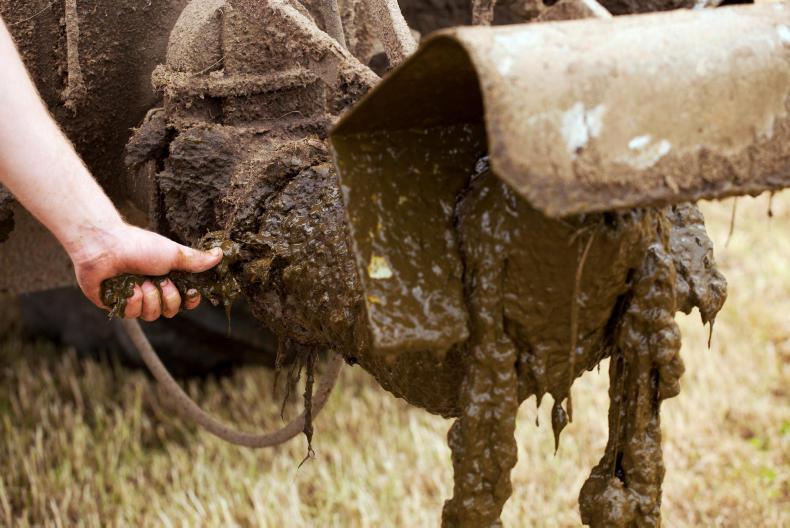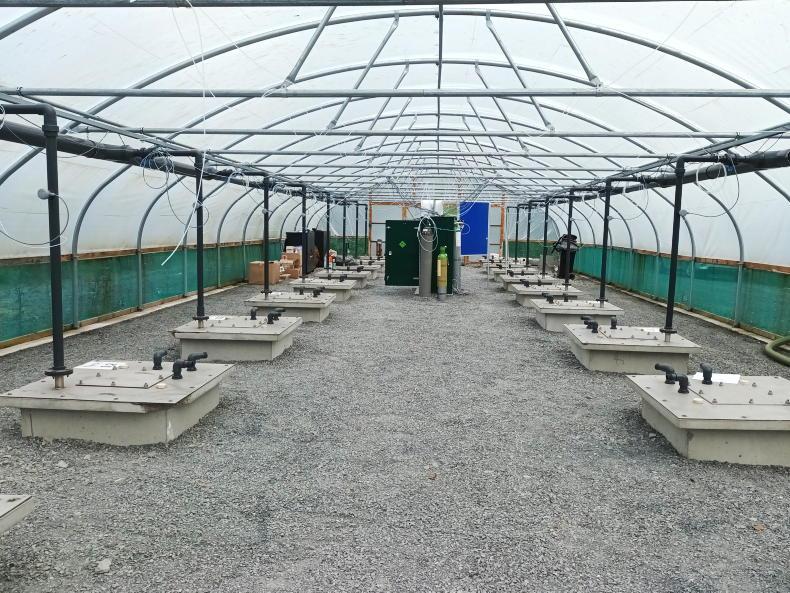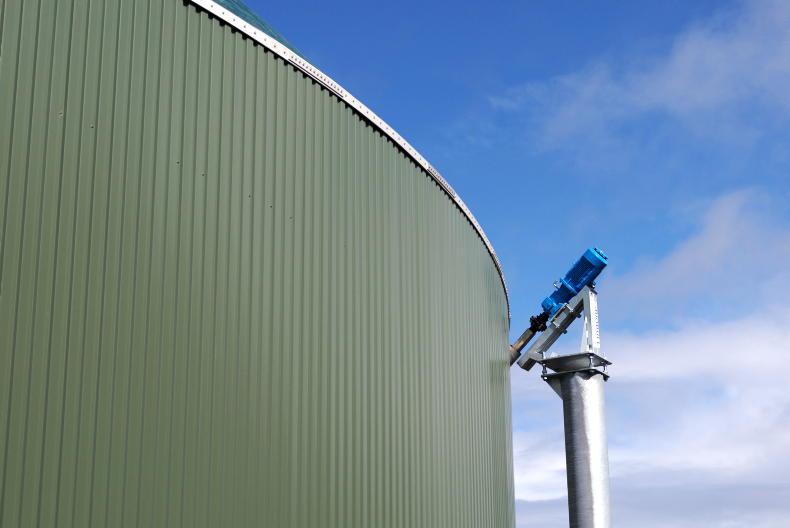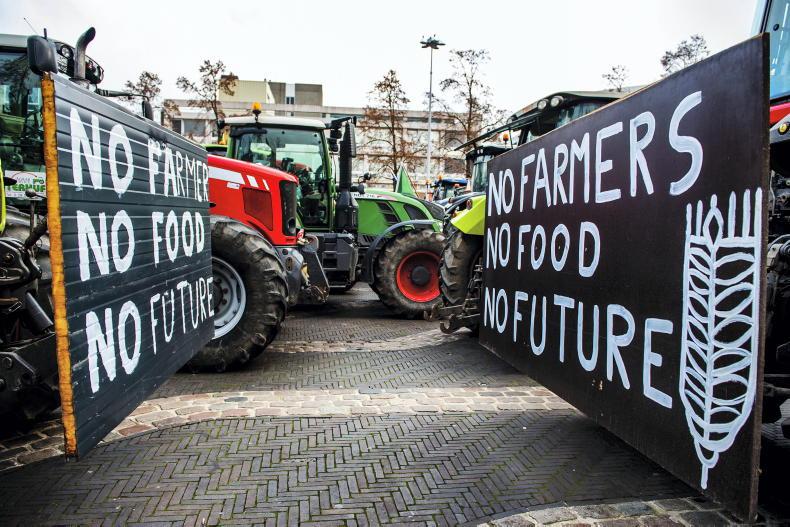The amount of ammonia released into the atmosphere by Irish farmers grew by 2% in 2015, the sharpest annual increase in a decade. This is confirming a trend that has seen ammonia emissions increase consistently since hitting a record low in 2011. Restrictions on splash-plate slurry spreading are under consideration as a way of addressing the problem.
Agriculture emits more than 98% of Ireland’s ammonia, and the 2015 national figure exceeded the maximum target set at EU level for 2030. While Ireland has so far respected its European ammonia obligations under 2010 and 2020 targets, it is becoming increasingly clear that action will be needed if the country is to remain on track while increasing agricultural production in the coming decade.
EU targets
Ammonia is known to cause respiratory diseases and EU member states have agreed to reduce its concentration in the air. Ireland must cut its emissions to 5% below 2005 levels in time for 2030. The Environmental Protection Agency (EPA) has warned that this would pose a challenge if the number of cattle recovered to the 7m seen in 2000. From a low of 5m in 2011, this has already increased to 6.6m in 2016.
In a clean air consultation paper published earlier this year, the Department of Communications, Climate Action and the Environment asked whether “a future end date on the use of splash-plate slurry spreading” should be set. In its reply, Teagasc estimated that at least half of Ireland’s cattle and pig slurry should be spread with trailing shoes to keep emissions within the targets.
Greenhouse gases
Tuesday’s CSO release also included a different presentation of greenhouse gas emission figures published earlier this year by the EPA, which monitors these gases separately because of their effect on climate change.
With one third of Irish emissions, agriculture is usually presented as the largest source of greenhouse gases compared with other typical activities such as energy generation, transport and housing. However, the CSO presentation by economic sector shows that industry had larger greenhouse gas emissions than agriculture in 2015, for the first time in three years.
Despite the end of milk quotas in 2015, agriculture had the slowest growth in greenhouse gas emissions that year, at 1.6% compared with 3.7% nationwide. Agricultural methane emissions associated with ruminants increased sharply, but carbon dioxide emissions fell and those of nitrous oxide linked to soil fertilisation remained virtually stable.
Read more
'No decision' on splash slurry plates under air quality policy – Naughten
Full coverage: ammonia
Full coverage: agriculture and climate change
The amount of ammonia released into the atmosphere by Irish farmers grew by 2% in 2015, the sharpest annual increase in a decade. This is confirming a trend that has seen ammonia emissions increase consistently since hitting a record low in 2011. Restrictions on splash-plate slurry spreading are under consideration as a way of addressing the problem.
Agriculture emits more than 98% of Ireland’s ammonia, and the 2015 national figure exceeded the maximum target set at EU level for 2030. While Ireland has so far respected its European ammonia obligations under 2010 and 2020 targets, it is becoming increasingly clear that action will be needed if the country is to remain on track while increasing agricultural production in the coming decade.
EU targets
Ammonia is known to cause respiratory diseases and EU member states have agreed to reduce its concentration in the air. Ireland must cut its emissions to 5% below 2005 levels in time for 2030. The Environmental Protection Agency (EPA) has warned that this would pose a challenge if the number of cattle recovered to the 7m seen in 2000. From a low of 5m in 2011, this has already increased to 6.6m in 2016.
In a clean air consultation paper published earlier this year, the Department of Communications, Climate Action and the Environment asked whether “a future end date on the use of splash-plate slurry spreading” should be set. In its reply, Teagasc estimated that at least half of Ireland’s cattle and pig slurry should be spread with trailing shoes to keep emissions within the targets.
Greenhouse gases
Tuesday’s CSO release also included a different presentation of greenhouse gas emission figures published earlier this year by the EPA, which monitors these gases separately because of their effect on climate change.
With one third of Irish emissions, agriculture is usually presented as the largest source of greenhouse gases compared with other typical activities such as energy generation, transport and housing. However, the CSO presentation by economic sector shows that industry had larger greenhouse gas emissions than agriculture in 2015, for the first time in three years.
Despite the end of milk quotas in 2015, agriculture had the slowest growth in greenhouse gas emissions that year, at 1.6% compared with 3.7% nationwide. Agricultural methane emissions associated with ruminants increased sharply, but carbon dioxide emissions fell and those of nitrous oxide linked to soil fertilisation remained virtually stable.
Read more
'No decision' on splash slurry plates under air quality policy – Naughten
Full coverage: ammonia
Full coverage: agriculture and climate change









SHARING OPTIONS